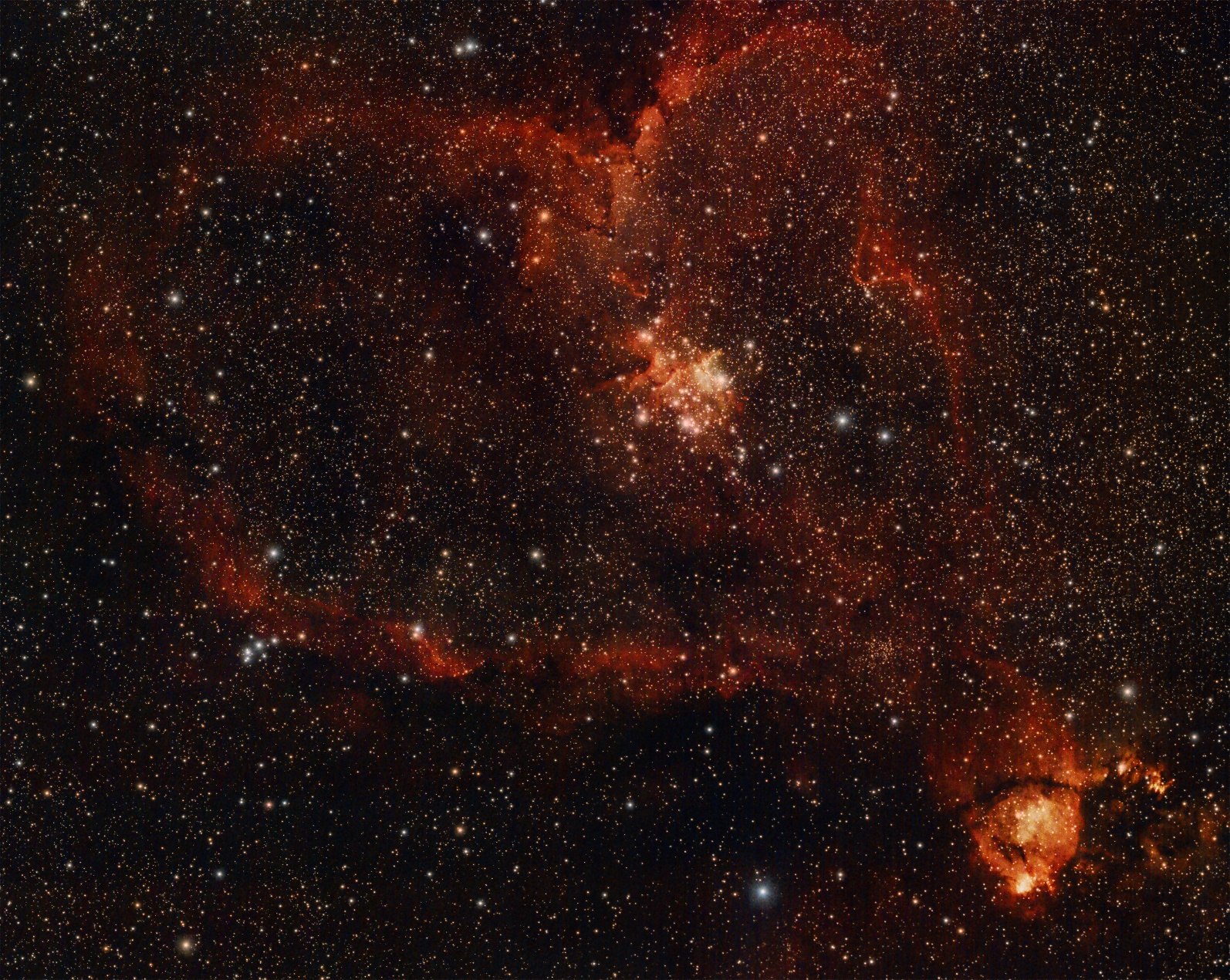Is the heart and soul of our Galaxy located in the northern constellation Cassiopeia? Possibly not, but that is where two bright emission nebulas nicknamed Heart and Soul can be found – soulmates you could say. (Groan)
The Heart Nebula
The Heart Nebula, named for the obvious valentine shape, is officially known as IC 1805. It is about 200 light-years across and is approximately 6000 to 7500 light-years away from Earth. The rich hues result from the ionization and excitation of hydrogen gas by the intense radiation emitted by nearby young stars.
The Heart Nebula (IC 1805) (Mosaic of two 45 min exposures Sep 16, 2023)
 (Click
here
to show image full size, press ESC to return.)
(Click
here
to show image full size, press ESC to return.)
The brightest part of the Heart, at the narrow tip, is separately classified as NGC 896, because it was the first part of the nebula to be discovered. It is also known as the Fishhead Nebula. The fish is hanging down in this picture.
The nebula’s red output and its shape are driven by the radiation from stars near the center. This open star cluster, known as Collinder 26 or Melotte 15, contains a few bright stars nearly 50 times the mass of the Sun, and many more dim stars that are only a fraction of the Sun’s mass.
The Soul Nebula
Adjacent to the Heart Nebula, the Soul Nebula (IC 1848) spans approximately 150 light-years and is about the same distance away as the Heart. Unlike its counterpart, the Soul Nebula has a more diffuse and intricate structure, characterized by filaments of gas and dust sculpted by the winds and radiation from nearby massive stars.
Like the Heart, the Soul also shines brightly in the red light of energized hydrogen gas.
The Soul Nebula (IC 1848) (55 min exposure Sep 16, 2023)
CC_GraX+Siril+ASAC.jpg) (Click
here
to show image full size, press ESC to return.)
(Click
here
to show image full size, press ESC to return.)
At the heart of the Soul Nebula is the open star cluster Collinder 399. The stars of Collinder 399 illuminate the surrounding nebula, contributing to its overall glow.
The stunning emission nebula IC 1871 is located within the Soul Nebula. Rolling clouds of ionized hydrogen, oxygen, sulfur and dust have created the spectacular features that define this nebula. The small very dark feature to the right is a Bok Globule. Bok globules are small, dark, and dense clouds of gas and dust, typically cold and isolated regions within larger molecular clouds. They are often considered as potential sites for future star formation.
The Heart is a large object in the sky, its diameter is about the same as that of four full moons side by side. The Soul is a little smaller. As we see them they are about as far apart from each other as the Heart’s diameter. The Soul just barely fits into the field of view of my telescope/camera combination, while the somewhat larger Heart is required me to take two separate images and piece them together as a mosaic.